
Students will identify types of drugs, the short and long-term effects, and identify strategies for maintaining a drug-free lifestyle.
- Subject:
- Health Education
- Material Type:
- Lesson
- Lesson Plan
- Author:
- Utah Lesson Plans
- Date Added:
- 01/28/2022

Students will identify types of drugs, the short and long-term effects, and identify strategies for maintaining a drug-free lifestyle.

This lesson integrates Health Standard 6 (dysfunctional eating) with Language Arts Standard 7 (imperative writing). It teaches students the dangers of dysfunctional eating. Students create a recipe for a healthy snack and present it to the class both orally and in written format.

Students will demonstrate health-promoting and risk-reducing behaviors to prevent substance abuse. Students will also demonstrate independent research to find academic information.

In this lesson we will talk about why it is important to be healthy. We will use lots of pictures and class participation.
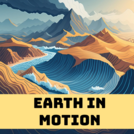
In this lesson, students will engage in a creative assessment of Earth's systems and their interactions. Through the creation of a stop motion animated story, students will demonstrate their understanding of how different Earth systems interact. Working in groups, students will select at least two Earth systems to portray in their stop motion film, using playdough. This lesson is designed to span 3 45-minute blocks, allowing time for brainstorming, planning, and presenting their animations.
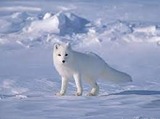
Summary In this lesson, we are going to learn how earthquakes formMain Core Tie Science- 5th Grade Standard 2 Additional Core Ties Science- 5th Grade Standard 2 Objective 2 Science- 5th Grade Standard 2 Objective 3Time Frame 2 class periods of 45 minutes each

This lesson teaches students how to find and properly cite openly licensed photos online. They will also learn how to create a collage on Adobe Creative Cloud Express and will include pictures of earthquake damage and ways to reduce the impact of earthquakes. Citation for image: Colin Lloyd, Unsplash License, from Unsplash.com
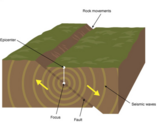
Students will gain a basic understanding of earthquakes, how and why they happen, and how they can change the landforms.

This is a lesson designed to integrate science curriculum with computer programming for 4th graders.

This lesson plan explains earth's four spheres to students. Students will answer questions in a whole class discussion about the spheres and will show they have mastered the concept by drawing pictures and explaining how the earth's spheres can interact with each other. This would be recommended as the first lesson in teaching Interactions with Earths Systems. Credit for Photo: "Earth Day 2008" by Ashish Lohorung is licensed under CC BY-NC-SA 2.0.

Students will create menus for a restaurants in small groups. The class will use them as a basis to order a healthy meal. Students need to know the difference between an "everyday food" and a "sometimes food." "Everyday foods" provide excellent fuel for the body to work efficiently and "sometimes foods" provide inferior fuel to the body. We CHOOSE what food to put into our bodies. When we choose healthy foods, our bodies work better and we live longer, stronger lives. If we select unhealthy foods to eat most of the time,our bodies will have trouble working efficiently and will place us at an increased risk of developing cardiovascular disease or stroke.

This is a lesson for preschool students. In this lesson, students will learn about the importance of eating healthy and how to make good food choices. They will learn about the five food groups and be able to categorize food into the correct food groups. This lesson follows the following core standards: Strand 4: Nutritions- Students will understand why food choices are important, Standard HE 4.1 Identify a variety of healthy foods, Standard HE 4.2-Identify healthy food and begin to categorize into food groups, Standard 4.3 Try new foods from a variety of food groups.Image Citation: food healthy flyer landscape by yellow bananas from Canva created by Suzanne McMillan

This is a second grade lesson plan about nutrition and building blanaced meals. In this lesson, students will review the five food groups and create a video presentation showing a balanced meal they created with their family. This lesson plan was created by Sydney Blake. It aligns with 2nd Grade Standard 5 Nutrition - Standard 2.N.1: Identify food and beverage choices that contribute to good health. https://www.uen.org/core/core.do?courseNum=7020

Students will learn about interactions between objects in the solar system that influence phenomena observed from Earth. This includes both solar and lunar eclipses. They will develop and use a model of the Sun-Earth-Moon system to describe the eclipses of the Sun and Moon.

Ecosystems are shaped by interactions among living organisms and their physical environment. A food chain shows the energy flow through organisms in an environment. A food pyramid shows loss of energy in a food chain.

Students will be able to identify and explain the differences between different economic systems (Market, Mixed, Command, Communist, Socialist).
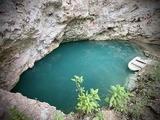
This lesson plan utilizes the use of mobile devices for digital photography to enhance student learning. Students will be learning about Ecoturism, comparing and contrasting geographical landscapes in different parts of Latin America. This lesson is meant to be taught in Spanish, but can be adapted to other languages. (Thumbnail image: Cenote Santa Cruz, Homun, Yucatan, Mexico, Abril 2021, by Sharon Hahn Darlin: CC-BY-2.0 CC, from Wikimedia Commons)
A comprehensive six day unit on the study of eggs, their structure, sizes, grades, nutritional value, functions in recipes, preparation techniques, and storage guidelines.
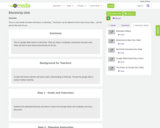
This is a very simple overview and lesson on electricity. This lesson can be altered to fit the need of your class. Use the pieces that work for you.

This lesson is to teach 3-5th grade students five basic individual jump rope skills. Students will be taught how to find the correct jump rope size for them, and the five basic skills of forward jumping, backward jumping, jog step jumping, one foot jumping, and skier jumping. They will also be shown other jumps they can try for fun. They will work alone, and then with a partner who will video them doing the five different skills. They then have a rubric to fill out and self-assess their jumping. They will be taught about basic digital citizenship skills of getting permission before filming others and not posting videos online without their parents permission.